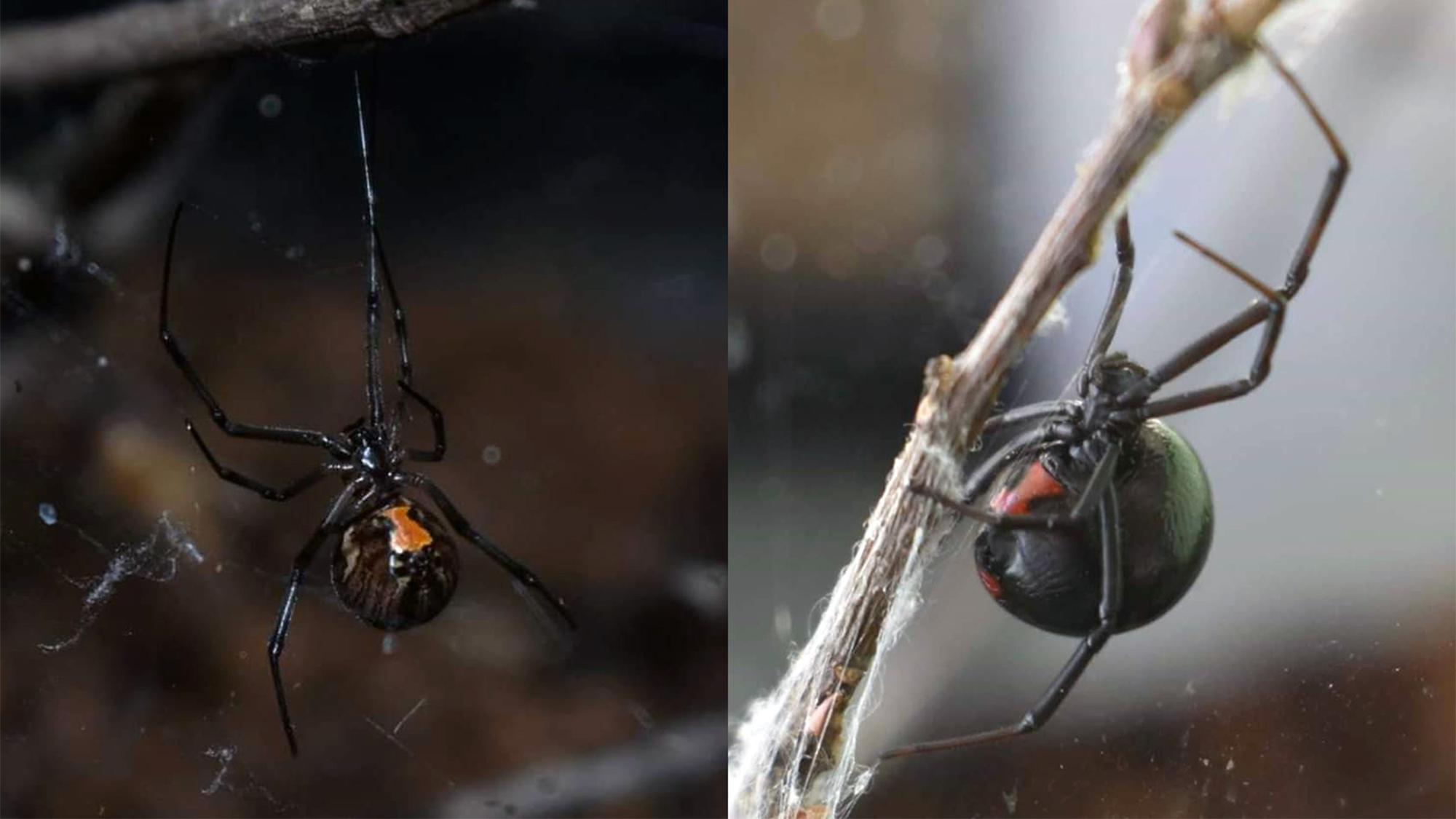

It can be pretty tough to be a bug, especially for spiders that have a not so great reputation. While black widow spiders (Latrodectus hesperus) and their venomous bites are a common fear for humans, spiders who call parts of the southern United States home have quite a bit to fear themselves. Brown widow spiders (Latrodectus geometricus) don’t seem to get along with their cousins from the same genus, and over the past few decades scientists have observed brown widow spiders increasingly displacing black widows.
But like any family drama, it’s more complicated than fighting over food or habitat. A new study published March 13 in the journal Annals of the Entomological Society of America suggests that brown widow spiders seek out and kill nearby black widows for reasons that scientists are still trying to really understand.
[Related: Jumping spiders might be able to sleep—perchance to dream.]
“We have established brown widow behavior as being highly aggressive towards the southern black widows, yet much more tolerant of other spiders within the same family,” Louis Coticchio, a former zookeeper who specialized in venomous animals a University of South Florida undergraduate student who led the study, said in a statement.
Scientists believe that brown widow spiders were native to Africa before being introduced to every continent except Antarctica. The black widows native to North America have two closely related species, the western black widow (Latrodectus hesperus) and the southern black widow (Latrodectus mactans).
While Coticchio was collecting wild spiders in Florida, he noticed that areas brown widows displaceding black widows, but they didn’t conquer regions populated with other related spider species. He and his advisor devised a study to look at what was driving this displacement. The mathematical modeling used in the study showed both species are much more likely to die from being eaten than from food scarcity.
While comparing growth rates and fertility, they saw that sub-adult brown widow females were 9.5 percent larger than black widows, and adult female brown widows reached reproductive maturity 16 percent earlier and were about twice as fertile as black widows. Brown widow males are smaller than their black widow counterparts, but become fertile in a shorter time.
[Related: These male spiders fling into the air to escape post-coital cannibalism.]
The team designed experiments that paired brown widow spiders in a contained habitat with related cobweb spider species.They found that the brown widows were 6.6 times more likely to kill their roommates if they were southern black widows versus any other related species.
While living with the red house spider, sub-adult brown widow females simply cohabitated with other females in 50 percent of pairings. The red house spiders killed and consumed the brown widows in 40 percent of the observed pairings.
Brown widows peacefully cohabitated with triangulate cobweb spiders (Steatoda triangulosa) in 80 percent of pairings ,and they were killed in just 10 percent of the observed pairings.
However, when sub-adult brown and black widow females were put together, the brown widows killed and ate the black widows in 80 percent of pairings. Adult black widows were killed in 40 percent of trials, but they defensively killed brown widows in 30 percent of trials, and simply cohabitated during the remaining 30 percent.
“We didn’t expect to find such a dramatic and consistent difference in the personalities of the brown widow and the black widow,” said co-author and biologist Deby Cassill, in a statement. “Brown widows are boldly aggressive and will immediately investigate a neighbor and attack if there is no resistance from the neighbor. For two bold spiders, the initial attack is often resolved by both individuals going to separate corners and eventually being OK with having a nearby neighbor. The black widows are extremely shy, counterattacking only to defend themselves against an aggressive spider.”
The team is still uncovering what is driving this aggression towards a closely related species, noting that invasive species can typically outcompete native species through fertility, growth, dispersal, or defenses against predators.
“One question I would love to answer is how brown widows interact with other species of spiders, more specifically black widows in Africa, where brown widows are believed to have originated,” Coticchio said. “I would love to see if their behavior and displacement of black widows is something that they have adapted here in North America, or if this behavior is something they exhibit naturally even in areas where they have coevolved with black widows for much longer periods of time.”
